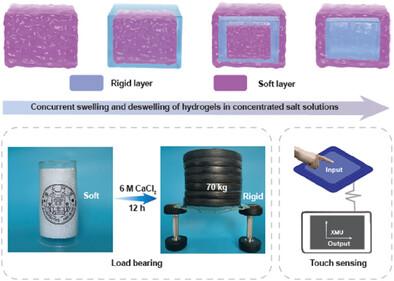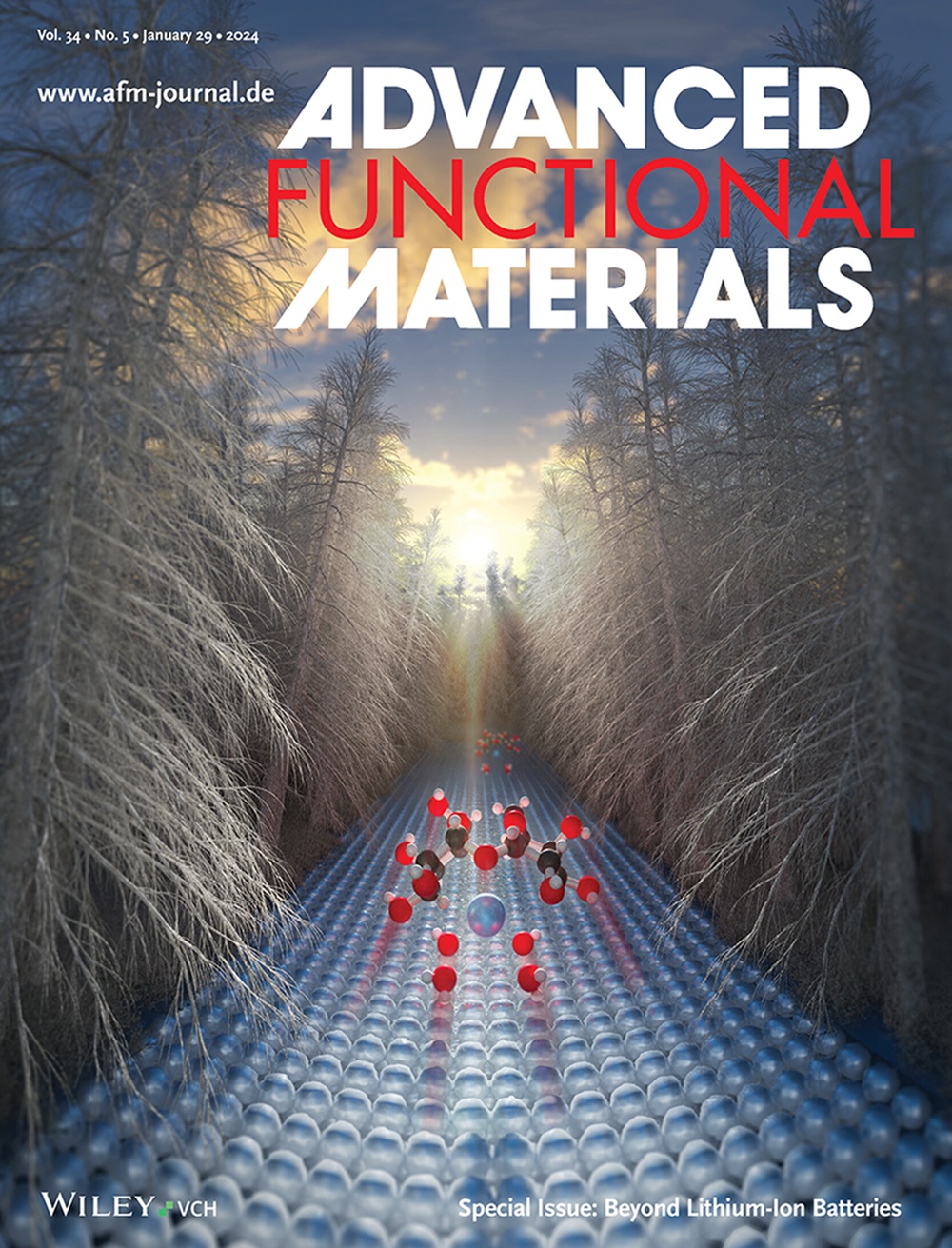A Water State Manipulation Strategy for Ultra-Stiff Yet Highly Sensitive Hydrogels
IF 18.5
1区 材料科学
Q1 CHEMISTRY, MULTIDISCIPLINARY
引用次数: 0
Abstract
Hydrogels in water or aqueous solutions swell or shrink unidirectionally until reaching an equilibrium state, which has been extensively studied through both experimental analysis and theoretical prediction. In this work, an unexpected concurrent swelling and deswelling behavior of hydrogels is reported, which manipulates the water state in the polymer networks. The osmotic pressure-driven rapid deswelling and the ionic electrostatic repulsion-driven slow swelling of hydrogels occur simultaneously, affording double-layered polyacrylamide (PAM) hydrogels, in which the rigid inner layer does not contains free water, while the soft outer layer comprises both bound and free water. The PAM hydrogels show uniaxial tensile fracture strengths and Young's moduli up to 104.2 MPa and 2.4 GPa, respectively, outperforming various polymeric and biological structural materials. This strategy is applicable to the general molding and three-dimensional (3D) printing techniques, providing wide possibilities for engineering applications. Such strong and rigid hydrogels can simultaneously serve as structural materials for load-bearing and act as functional materials for super-stress (25 to 6000 N) and highly adaptable tactile sensing. These findings enrich the hydrogel swell/deswelling theory and broaden the engineering applications of hydrogels as structural materials.

求助全文
约1分钟内获得全文
求助全文
来源期刊

Advanced Functional Materials
工程技术-材料科学:综合
CiteScore
29.50
自引率
4.20%
发文量
2086
审稿时长
2.1 months
期刊介绍:
Firmly established as a top-tier materials science journal, Advanced Functional Materials reports breakthrough research in all aspects of materials science, including nanotechnology, chemistry, physics, and biology every week.
Advanced Functional Materials is known for its rapid and fair peer review, quality content, and high impact, making it the first choice of the international materials science community.
 求助内容:
求助内容: 应助结果提醒方式:
应助结果提醒方式:


